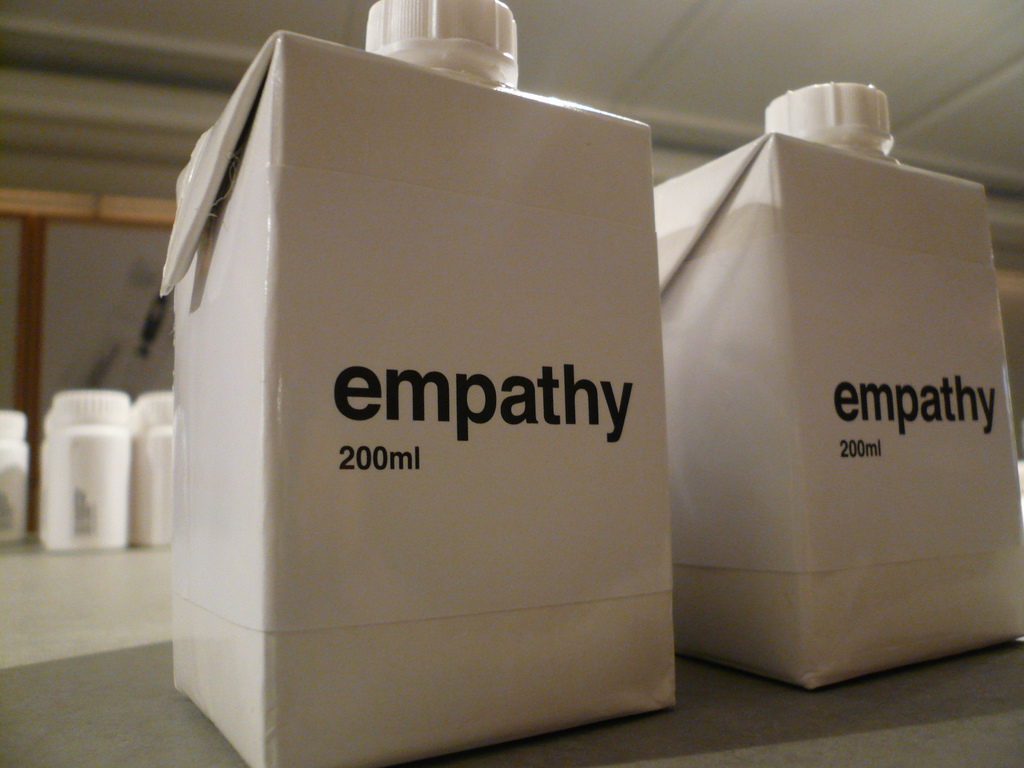“Empathy; The ability to understand and share the feelings of another.” – OED.
By Elspeth Hunter
There is no denying that empathy is slowly disappearing. Given the current political climate which has seen the rise of right-wing, self-proclaimed ‘anti-establishment’ parties in all corners of the western-world, empathy is the one emotion that many seem to be lacking, at a time when it is most needed. And indeed, it is this very sentiment which fuels museums and heritage; as highlighted by Annemarie de Wildt in a lecture I attended as part of the Heritage and Memory Studies course at the University of Amsterdam, the ultimate aim of GLAMs is to “evoke empathy” in visitors as a means of understanding communities that are different to our own. But is this enough?
Most visitors will stop right there – happy with the emotional response they have mustered up, and will leave with the impression that they have done good by witnessing such an important exhibition. The sensation of satisfaction will predominantly be theirs. And we are all culprits of this, myself included – all part of this safe middle-class bubble of liberal ‘do-gooding’. According to Anthony Giddens, it is only natural for us to do this as self-identity is indeed a “reflexively organised endeavor”, requiring constant fine tuning in order to create the desired self-image. We reenact these performances of ‘empathy’ over and over again in these now familiar contexts in the hope that we are perceived as culturally/politically aware (I find Miriam Elia’s satirical Ladybird book, We Go To A Gallery, perfectly sums up my point…) These public cultural spaces are then often reduced to places of self-worth and affirmation as we seek to assert our identities, rather than use our new-found knowledge to foster real tangible action.
And the GLAMs themselves do not help the matter; despite their efforts to appeal to a wider audience, these spaces maintain their image of traditional spaces of knowledge and academia. I often leave public lectures, organised as part of an exhibition’s programme, feeling completely baffled at the speakers’ complete ignorance of quite how elitist and exclusionary the whole setting is, as academics and privileged individuals use the space to intellectualise and pervert real life problems of another, typically less fortunate, community. The privilege of complacency is rife amongst museum-goers and museum professionals, but how can GLAMs reach further than this desire to just evoke empathy and actually help people to become active agents? To put the exhibition and its lessons to work?
It is here where I believe Annemarie de Wildt could have elaborated further. The true aim of these exhibitions which display narratives of ‘the other’ is not merely to “evoke empathy”, but surely to instigate action, to create dynamic dialogue between the community reflected and the general public? Raising awareness is one thing – indeed I agree that the mere exposure of typically hidden narratives is necessary and worthwhile – but surely they aim for constant reinterpretation and activity as well? Not just hoping for inwards reflection, they should hope to inspire individuals to go out and challenge the external world too.
Please do not mistake this for a manifesto against empathy. I am a left-wing, ‘peace-and- love-will-win-the- day’ kind of person. Empathy is crucial. But more than this, we need constant dialogue – not just empathy – in order to truly get the most out of our museums and galleries. In her text On the Political, Chantal Mouffe puts forward the idea that modernity has focused too strongly on “empathy and reciprocity”, believing this outlook to be an “idealized view of human sociability”. Rather, we should be encouraging conflict as progressive, as it is within a “vibrant ‘agonistic’ public sphere of contestation” that meaningful and productive dialogue can take place. Whilst her text goes a step too far for my liking – coming close to a right-wing criticism of liberal-democracy – perhaps she has a point. She is wrong to denounce empathy, as it is a necessary stop on the road to meaningful action. However, she probably is right to believe that far too many people are falling for the “currently fashionable” notion of “partisan-free democracy”, “global civil society”, and feel comfortable simply stating their allegiance to this form of politics, rather than engaging themselves in real feats of change. Real feats of change that often demand that we get our hands dirty and involve ourselves in the nitty-gritty of real and, quite often painful, cultural work in the community.
My question is how can GLAMs help visitors to think less egotistically, and become these active agents? One possible method, which is being used by many cultural centres already, is to make a break with the traditional exhibition structure, transforming these spaces from the typical format of the observer and the observed, to places of activity and participation. To involve visitors actively within the exhibition space may remind them that the real progress – the real work in bridging divides between communities – is on the ground. Using the words of Buckley and Witcomb, it is our duty to “engage with the ‘messy world’” of real politics if we have any hope of achieving progressive change.
All images used are free for personal and commercial use, no attribution required.
Works cited
Buckely, Kristal, & Witcomb, Andrea. (2013). Engaging with the future of ‘critical heritage studies’: looking back in order to look forward. International Journal of Heritage Studies, vol. 19, issue 6, pp. 562-578.
Edensor, Timothy. (2000, April). Staging tourism: tourists as performers. Annals of Tourism Research, vol. 27, issue 2, pp. 322–344.
Giddens, Anthony. (1991). Modernity and Self-Identity: Self and Society in the Late Modern Age. Cambridge: Polity Press.
Mouffe, Chantal. (2005). On the Political. New York & Abingdon: Routledge.
